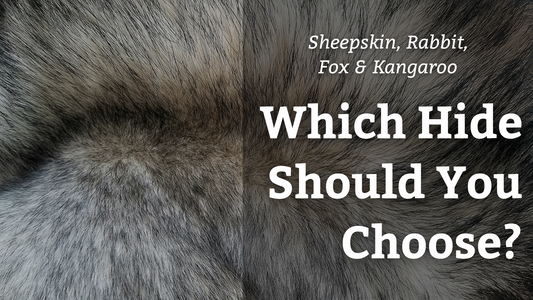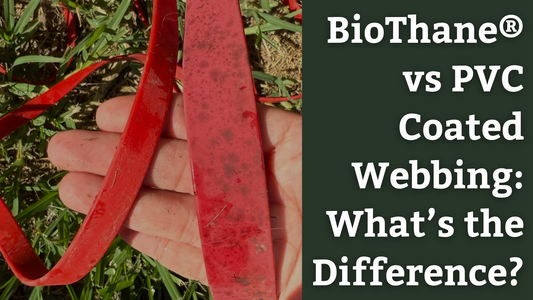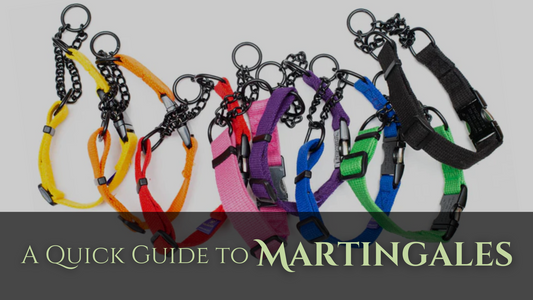So far here at Wildhunde, we’ve discussed how to play tug safely, and being mindful of safe hardware in dog gear. Let’s round it out with a focus on what makes a safe and appropriate tug toy. The overall ‘safeness’ of a tug toy primarily comes down to the materials used, its construction, and of course, is it being used appropriately? We touched on this briefly in the aforementioned posts, but here we’d like to expand on the concept somewhat.
Given that we make a lot of tugs toys here, you can imagine that we’ve put quite a bit of thought into the construction and materials that are best for tug toys, as well as the materials and construction that we very much try to avoid. These design choices are not merely for aesthetic reasons, but also safety ones. Let’s go over them one by one!

Toxic vs Safe Materials
What your dog’s toys are made from is so important! The thing we need to remember when it comes to tug toys, is that these go in our dog’s mouths! Straight in there! Meaning, we really need to pay attention to the materials being used, due to the risk of ingestion or toxicity.
If the dog toy contains or advertises the presence of any PVC, melamine, BPA or phthalates, or has ambiguous wording on the description regarding any of these ingredients? Steer clear! We don’t want these materials in your dog’s mouth.
Some toys advertise ultra-toughness due to being made from ballistic nylon, which is pretty much what it sounds like. A material that was originally developed for bullet-proof vests. Tough, sure. But not an ideal choice for a dog toy. It’s an extremely abrasive material that can be damaging to your dog’s long-term dental health. This rules it out as a chew toy, and while it could be used for short-term tug and fetch games – there are just so many better choices for such a toy. So, we avoid it.
Any chew or tug toy worth getting should have information about the materials used to produce it. We suggest looking for materials like natural rubber, BPA-free, phthalate free silicone, flax linen, TPR and fleece – these are all some green flag materials that are safe for your dog.
If you’re looking for natural fur products, check for information on how the hide has been tanned. This will tell you if it’s safe for your dog. Choose products that have been eco-tanned vs chrome-tanned, so you’re not giving your dog a chemical cocktail to chew on.

Awkward vs Ergonomic Design
Design choices matter! As we’ve discussed before, tug safety is important for you as well as your dog. It’s a game you play together, so the design needs to make sense for both of you. This reduces the risk of injury to you and your dog.
When looking at tug toy for dogs, design choices can affect the height at which you comfortably position the tug, whether you are able to hold it comfortably, and whether your dog can grip it easily. Alongside reducing any chance of getting bitten accidentally.
For example, if the dog tug toy doesn’t have a designated holding point to keep your hand safely away from dog teeth? Or it otherwise requires some contorted positioning on your end? Then it’s gonna be a no from us.
Look for tugs with ergonomic designs, with features that make sense for your comfort. Tugs with lengthy, padded, or grooved handles so that you can comfortably play with a secure grip, while also not risking your fingers being anywhere near teeth. Stretchy or bungee materials in the tug are also an excellent addition that help to absorb shock, which is especially convenient if you have a strong dog determined to throw your back out.
Not every tug has to have a separate handle or padded lining (or else we’d be hypocrites!), but we just advise you to consider what design makes sense for you and your dog. Is it comfortable to hold? Can you hold it at a safe height and distance? Yes? Then you’re on the right track!

Metal vs Stitching Components
Many leashes and collars and dog toys utilise metal joining components (i.e. rivets, carabiners and screws). These certainly have their place, and we covered the safety aspects of these in our other article here. Where this becomes a bit of a ‘danger’ scenario however, is when those components are placed anywhere that your dog’s teeth are likely to be.
In theory, using these hardware parts seems okay (metal = strong after all), but in practice it poses a huge risk to your dog. In any game of tug of war, it’s all too easy for someone’s aim to miss and end up with a bite in the wrong place. If your dog accidentally chomps down onto a metal stud, they will more than likely crack a tooth, an issue that requires a painful and expensive veterinary dental procedure.
This is even more detrimental if your dog happens to be a working dog or show dog. Healthy teeth are a crucial aspect of a working dog’s health, and any damage to them can cost your dog’s working future.
This is not even touching on the inevitable rusting which leads to loose parts and metal flaking; which your dog can swallow and risk choking on.
Overall, we recommend looking for tugs that use stitching instead of metal hardware. If the tug does have metal hardware, it’s not the end of the world, but we recommend ensuring that the hardware is kept well away from the dog’s side of the tug.

Rope vs Fleece Braids
While rope toys in general are not the problem, we strongly advise steering clear of braided rope tug toys. This style of tug is definitely in its renaissance; you’ll find them in almost every basic dog toy collection.
Rope has its place as a great low-cost chew toy (although we advise rope toys to always be used under supervision). However, as a tug toy, it leaves a lot to be desired. Much like the innocent seeming metal rivets, rope poses a deceptively strong risk to your dog’s precious teeth! In a game of tug, fibers from the rope can come loose and get wedged in between teeth and gums (ouch for your dog and also your wallet). A worst case scenario could have your dog’s tooth getting caught in the strands of rope braid and sustain damage from too much jerking around. This brings us back to the safe and appropriate use of certain dog toys, but we like to try and eliminate as much risk as possible.
For this reason, we’ve personally chosen to make our braided tug toys using fleece instead! Fleece is soft, gentle, stretchy, and doesn’t fray like rope does. Overall, it’s a much safer option for your dog’s mouth.

In Summary
Unfortunately, the world of dog toys is not a highly regulated one – so the onus falls on us as owners to be diligent and informed about what kinds of dog toys are safe or risky for our dogs. These are some of the biggest red flags we’ve noticed in the industry, and feel compelled to share in order to protect our furry companions.
Whether you choose to buy your dog toys from us here at Wildhunde, a different small business, or a big pet supply chain, you should always look for transparency on the materials used in the products you buy for your dog. This keeps you informed and responsible, as well as keeping your dog safe and happy!




